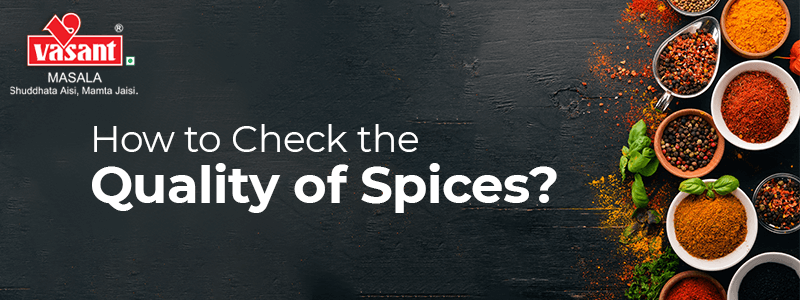
Spices are an essential ingredient in many cuisines across the world. Spices have been the most sought-after and expensive products on the planet since antiquity. Given this, spices have been sold widely all over the world at an extremely high value since ancient times.
India is known as the world's spice capital, producing a vast range of spice varieties in different climates that are unique to the type of spice produced. Spice testing criteria are affected by a variety of circumstances, such as changes in the weather or any contamination throughout the entire process of manufacture to packaging, all of which can have a significant impact on spice quality. When it comes to spices, quantity isn't as important as quality. If the quality of the spice is good, even a tiny amount will be enough.
As a result, it is critical to maintaining spice quality by conducting timely spice quality testing at a recognised testing centre by spice companies or spice exporters/traders. Spice testing is done to guarantee that the quality of the spices is maintained according to defined criteria and that they are free of pollutants such as pesticides, metals, and other adulterants. Spice quality testing ensures that your spices meet national and international export standards.
How to Check the Quality of Spices?
Spices are an essential component of every kitchen on the planet. They are responsible for the taste and flavour of our favourite sweet and savoury foods. Fresh and unadulterated spices are preferred since they impart a particular flavour and scent to the cuisine. Did you know, however, that we frequently purchase low-cost, low-quality spice imitations? Even if you live in a place where these spices are grown, be aware that you are not immune to the market's abundance of fake spices. Here is a handy guide by Vasant Masala to help you check the quality of spices.
Black Pepper
Black peppercorns are so widely used in India that it's hard to imagine we wouldn't be able to recognise a fake. To save money, several merchants mix papaya seeds with black peppercorns. Most people can't tell the difference between papaya and banana seeds since they're both around the same size and black in colour. Before purchasing, always crush a black peppercorn. If it's a genuine peppercorn, it'll be broken into huge pieces with a small amount of oil left behind. When crushed, low-quality or aged peppercorns will be separated into smaller pieces.
Red Chilli Powder
When it comes to powdered spices, determining freshness and purity is quite difficult. Powdered chilli peppers should be used to make chilli powders. They are, however, tampered with using colourants and chemicals to keep them looking fresh for as long as possible. Brick powder, talc, or soapstone can all be used to tamper with it. Water does not dissolve pure chilli powder. In a glass of water, dissolve the chilli powder. The colourant is present if the colour of the water changes.
Cinnamon
It's conceivable that the cinnamon you're buying is actually Chinese cassia. When compared to the original or Ceylon cinnamon, the latter has a far less complex and mild flavour. Cassia, like real cinnamon, does not have a strong fragrance. Always inspect the texture first to tell the difference between the two. Cassia is coarser and thicker than cinnamon, which is thinner. Cassia also has a proclivity for curling on one side. One drop of iodine can be used to test ground cinnamon for cassia. It has been infused with cassia if it becomes blue.
Cardamom
When purchasing a cardamom, the most important factor to consider is the colour. Cardamoms are plump and olive or green in colour when they are fresh. If the cardamom pods are overly green, artificial colours may have been employed to make them appear fresh. If they seem yellow, they may be too old or have been dried incorrectly. Check to see whether any colour is produced by rubbing cardamom pods between your fingers. Otherwise, you're fine to go!
Turmeric
Turmeric powder is made from a root that resembles ginger but is more yellow in colour. Many vendors nowadays offer coloured flours under the guise of turmeric powder. Fortunately, dissolving a pinch of powdered turmeric in water is a simple way to check. If the powder has yellowish flecks floating on top, it isn't manufactured with real turmeric. Purchasing knotty turmeric roots, drying them, and powdering them at home is the best method.
Related: How To Check Adulteration in Turmeric Powder at Home?

